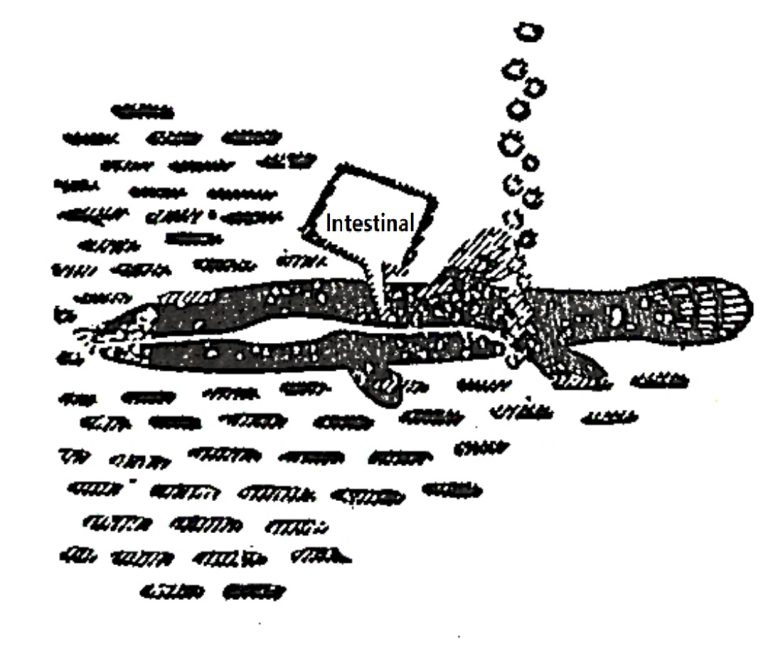Although loaches live in water, they often burrow into the muddy layer below the water’s surface to hide. At this time, many bubbles will emerge on the water surface. If many loaches are placed in a bucket of water for a while, they will move up and down in the narrow bucket and also emit many bubbles. What’s the reason for this?
As we know, loaches have a slender and long body shape, and like other fish, they usually use gills for respiration. However, when they burrow into the muddy layer, if they continue to breathe with their gills, the gill filaments will be covered with mud, losing their respiratory function. At this time, they temporarily use their intestines as respiratory organs to replace the gills for respiration. It may sound strange for fish to use their intestines to breathe. The intestines of loaches are not like those of ordinary fish, which wind around inside the abdomen; instead, they form a straight tube connecting the esophagus and the anus, thin and transparent like a gut, covered with capillaries. This short and straight intestine not only functions to digest food but also serves as a substitute for gills for respiration.
When loaches sense a lack of oxygen in the water, they intermittently protrude their mouths above the water surface, vigorously swallow a gulp of air, and then immediately burrow to the bottom of the water. After the air is swallowed into the intestine, the gallbladder wall, which is half filled with food and half filled with air, absorbs the oxygen from the air. The remaining nitrogen and carbon dioxide produced during metabolism are expelled into the water like “farts” through the anus, causing many bubbles to emerge on the water surface.
Interestingly, loaches not only can breathe through their intestines but also through their skin. Therefore, if they are transported to a slightly distant place in a basket and cold water is sprinkled on them from time to time, they will not die.

